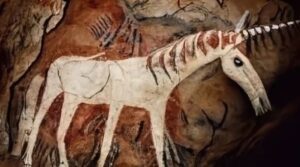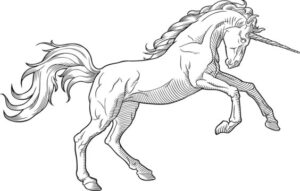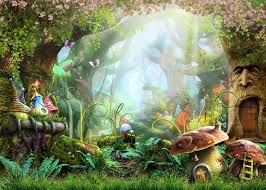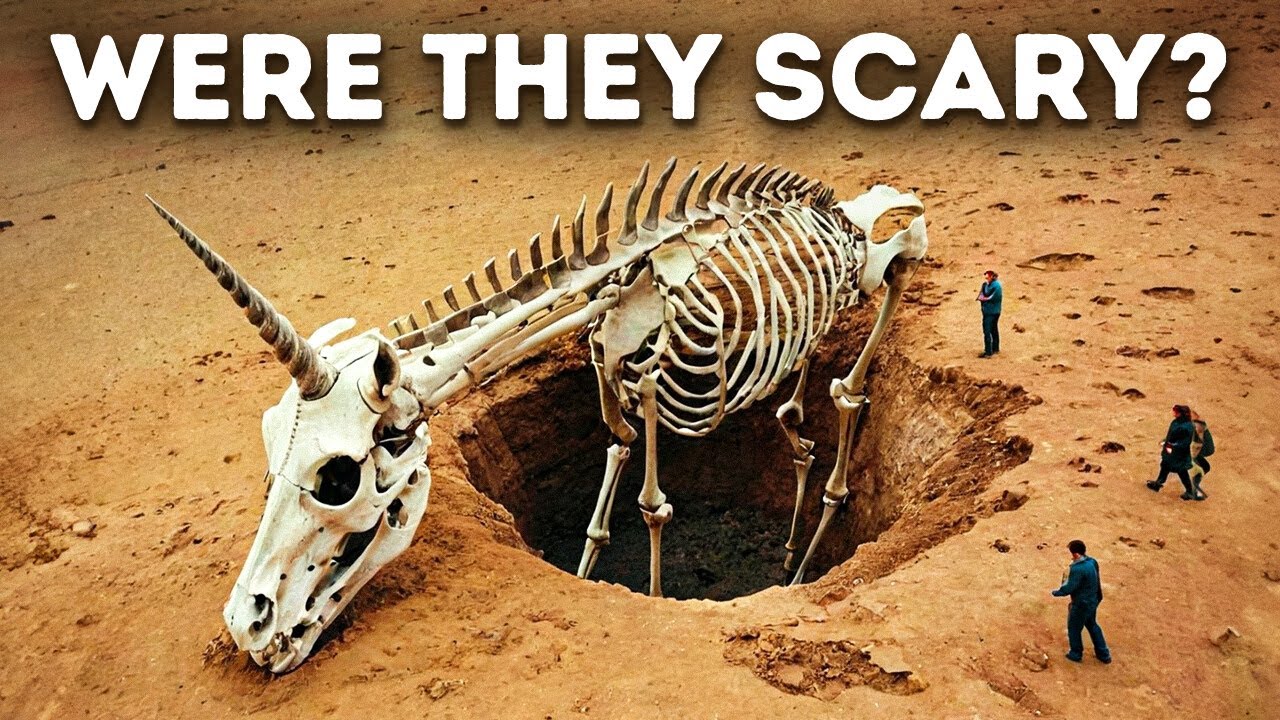The Enigmatic Unicorn
We all love unicorns, those legendary creatures famous for their beauty. You’re now thinking of a white horse with a spiraling horn on its forehead, and there’s probably a rainbow somewhere nearby. But what are the origins of this image? And more importantly, can it be true? Well, yes and no. Let us start from the beginning.
The Name and Its Origins
The name. It comes from Latin. Unicorn. Translates as one horn. Today, there is one land animal that fits the bill. The rhinoceros. The Greek name for a unicorn is monomers, which, again, means one horn. So, it all fits neatly. But wait, isn’t a unicorn a kind of horse? We need to call in science to resolve the issue.
The Scientific Discovery
Scientists have discovered a skull of an animal that could have been the real unicorn and roamed the earth some 30,000 years ago. The animal resembled a huge, hairy rhinoceros. Nothing like the image of a unicorn we have today. It was two times heavier than a giraffe, and its diet consisted of grass, a lot of grass.
But the skull the scientists found in Central Asia revealed another surprising fact: the animal’s age. Previous research pointed to the fact that the species went extinct 350,000 years ago. This meant that our ancestors never shared the same living space with this oversized rhinoceros. But the skull was dated much later.
The Birth of the Legend
This dates the animal right around the time when humans were already there. This is where the legend begins. Imagine you’re a prehistoric human who had just seen a unicorn. What would you do? It’s not like you can take out a smartphone and snap a picture of it. No, you would probably paint it on a cave wall.

Such drawings have survived to the present day. In France, there’s an image of an animal that seems to have a single horn. It’s in the Hall of the Bulls. All the other animals there have two wavy horns, but the mysterious spotted animal has two lines on its head. Do these double lines represent a single horn?
Is this the famous unicorn? Perhaps the name of the drawing is the unicorn panel. But images of unicorns don’t only exist in cave drawings. In the Indus Valley, scientists have found various seals featuring a mythical animal with a single horn. Ancient Greek writers believed that unicorns lived in India.
Ancient Beliefs and Descriptions
Back then, this region of the world was exotic to them. Although ancient Greeks never saw a unicorn, they had a pretty detailed description of the animal. They even recorded that the meat from this creature had a bitter taste. But was it a horse or a rhinoceros? Neither. For Greeks, the unicorn was a kind of donkey.
Go figure. In Chinese mythology, there’s a similar creature. Its name, translates into English, means male female. The animal’s description resembles a unicorn. A single horn on its forehead, the tail of an ox, and the body of a deer. It feeds on vegetation, just like the ancient rhinoceros from Central Asia.
When the first giraffe was presented to the Ming Emperor, they described it as a unicorn. The ruler concluded that the animal definitely wasn’t the mythical unicorn, but the legend lived on in that part of the world. The modern Japanese word for giraffe comes from the Chinese word for the unicorn-like creature.
The Persian Perspective
Ancient Persians also knew about the existence of unicorns. There’s a picture of a unicorn in their capital city, but the fun part is that it has two large wings. Seems odd, but the Persians also never saw a unicorn in person. For them, like for the Greeks, it was a being that lived outside the known world.
Fascination and Myths
That’s the reason we’re so fascinated by unicorns today. We find accounts of such creatures in the writings of Aristotle and even Julius Caesar. These famous people claimed that animals resembling unicorns lived in the forests of Germany. The modern image of a unicorn originated in the Middle Ages and the Renaissance in Europe.

People back then had quite the imagination. They showed unicorns in book decorations. According to ancient scribes, this animal was ferocious. Its main enemy was the elephant. The people in medieval times thought highly of an animal they had never seen. It was quick and dangerous, so it needed to be hunted down.
The Unicorn Hunt
But how on earth do you lure a unicorn? With the help of a fair maiden, of course. This sounds strange today, but keep in mind that the Dark Ages were a peculiar period in history. Back then, doctors used leeches as legit medical treatment. The story gets wilder. A maiden would go inside a forest. A unicorn would spot her and jump inside her lap.
After it fell asleep, hunters would appear. They would then capture the unicorn and take it to the king. But why were Europeans impressed by the unicorn? Because of its horn. They believed that it had magical power. A unicorn’s horn could detect poison in food and drinks. When you ground it into a powder, the horn had the power to whiten teeth.
Magical Traits and Misinterpretations
These were just some magical traits given to a unicorn’s horn. The folklore was so strong that Europeans even had a backup for the times they couldn’t get their hands on a real horn. That must have happened quite often, and they used real narwhal horns as a replacement. These are whales with a large, tusk-like tooth coming from their mouth.
In England, the unicorn was a symbol of something you could never see or catch. In the 16th and 17th centuries, it became associated with imagination. That’s when the rainbow came into the picture. The Victorians were the first to connect the symbol of a rainbow to the unicorn.

Its first appearance in fantasy literature was in the novel Through the Looking Glass for young readers. That was the sequel to Lewis Carroll’s more famous work, Alice in Wonderland. The unicorn now stood for hope and purity. Still, there were no recorded sightings of the animal in real life. At least none that could be confirmed by science.
Modern Allegations and Discoveries
In 1663, a German scientist claimed to have found a unicorn skeleton. The story seemed too good to be true, and it was: someone made the skeleton from the bones of various animals and tried to pass it off as a unicorn. Today, the fake skeleton is displayed in the local Natural History Museum.
The people weren’t going to give up and search for unicorns everywhere they went. In the 20th century, a British explorer discovered a new species in Africa. It had a small bump in the corner of its head. The public nicknamed the mysterious animal the African unicorn. But this wasn’t true. Now we know this is an okapi.
It’s most closely related to a giraffe, but it looks like a zebra in the back part of its body, and its head resembles a deer. It’s an impressive animal, but it’s not even close to the elusive unicorn.
The Latest Alleged Sightings
One of the latest alleged sightings happened in 1991. An Austrian biologist reported seeing a unicorn in a forest in Germany. The legend says that these animals live in enchanted forests. But there’s just one tiny issue: the total lack of physical evidence. In fact, there are historians who claim that unicorns never existed.

The animal was simply a misinterpretation of cave drawings. Perhaps all those ancient images of unicorns were just two-horned animals shown from the side. It could be so. It’s hard to add the third dimension to a 2D image. But then, in 2013, the unicorn reappeared. Not the animal, though, the word.
An American venture capitalist came up with the term to refer to startup companies with a value of over 1 billion dollars. She chose this word because these companies are as rare as the mythical animal. There are only a thousand of such enterprises in the whole world, and you’ve probably heard of the most famous one: Elon Musk’s SpaceX.
That’s it for today! So hey, if you pacified your curiosity, Explore more Amazing Facts and stay on the mudassirmirza.online!
- Unexplored Places We Are Still Not Sure Really Exist
- The Science Behind Feeling Like You’re Being Watched
Read our previous article: In the World: The Most Mysterious Volcanoes in Arizona

13 thoughts on “The Full Story of Unicorns: Yes, They Were Real”